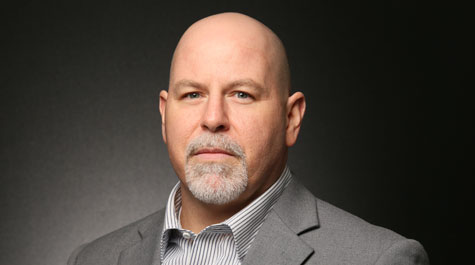Sociology professor’s work on immigration’s impact on crime proves timely
That’s according to recent paper by Ousey and co-author Charis Kubrin of the University of California-Irvine. “Immigration and Crime: Assessing a Contentious Issue” is a meta-analysis of 51 previous studies. It will be published in the inaugural issue of the Annual Review of Criminology early next year.
Ousey cautions against oversimplifying complicated data that has so many variables and nuances, but said there is one clear conclusion that emerges in the paper.
“The preponderance of the evidence doesn’t support [the argument] that immigration increases crime,” Ousey said. “And we can say that pretty definitively because the meta-analysis draws upon so many studies and so many estimates of this relationship between immigration and crime.
“And across those [studies] we just don’t find any evidence that suggests that it’s making crime worse.”
Other literature focusing on whether recent immigrants commit more crimes goes even further, he added.
“That literature also shows that, particularly for first generation immigrants, that the relationship between immigrant status and criminality is actually negative,” Ousey said. “So in other words, immigrants are less likely to be involved in crime.”
He said there are many reasons why that might be the case, including that people who are immigrating tend to be goal-directed. And people who are prone to crime aren’t likely to have the persistence to complete the process of immigrating legally or illegally.
“There’s lots of angles; there’s lots of issues,” Ousey said. “But we can say with pretty strong empirical backing that there’s just no support for the idea that immigration is fostering an increase in crime. There just isn’t any evidence of that.”
Although the recent controversy surrounding the executive order has increased interest, Ousey said the issue was already politicized and had received much attention.
The start of social scientists’ and criminologists’ recent surge of interest in the subject can be traced back directly. Harvard sociologist Robert Sampson, now the co-editor of the inaugural issue of the Annual Review of Criminology, wrote a 2006 op-ed piece in the New York Times stating that increased immigration in the 1990s might actually have been responsible for a drop in crime in the U.S.
“That really was the launch point for our work, and others who were working in this area to really start to look at this question of immigration and crime,” Ousey said.
For suggesting the hypothesis that immigration may have contributed to the crime drop in the U.S., Sampson received hate mail, some of which criticized his idea as preposterous.
“So I think it’s an issue that people feel passionately about and care about,” Ousey said, adding that that was the case even before the recent election and controversial order. “I think even before that it was an issue that was of pretty strong importance, not just to researchers and scholars, academics and the ivory tower. But really people care about it in society.
“But it’s been amazing how much it’s kind of taken off.”
The paper is focused on crime and does not address terrorism. Ousey pointed out, though, that the distinction becomes slippery when classifying events such as the Pulse nightclub shooting that could be considered both.
He also said that as part of the executive order, the travel ban and sanctuary cities are separate issues that have gotten lumped together. Though best kept separate, he said both foster a view of immigrants as dangerous.
“We’re constantly hearing now about immigrants, undocumented immigrants, terrorism, crime all sort of lumped together in this constant barrage,” Ousey said. “Sociologists talk about that social construction of reality. That’s kind of what’s going on, in a sense.”
“We’re creating this reality that doesn’t really exist of like, oh my goodness, when we’re walking out to the parking lot here we’re likely to be crime victims or terrorism victims because there are 11 million undocumented immigrants or because we are not tough enough on immigration. It flies in the face of the objective data that we have.”
Emphasizing that research is based upon data rather than emotions is important, Ousey said, because otherwise people get caught up in “urban myths.” He refers to what he calls “outgroup intolerance,” which is that if someone is less welcoming and less comfortable with people who are different, they tend to be more willing to favor harsh punishments for crime.
“And so those kinds of things go together,” Ousey said. “It’s like that really xenophobic aspect of our society that leads to not only perhaps more punitive policy, but just the underlying assumption that immigration is necessarily a bad thing. So the importance of data and analysis that tries to be careful and present a reasoned argument backed up by empirical data is important because if we don’t do that, then all we’re doing is essentially going along and making policy on the basis of prejudice and fear.”
“As a scientist, I try not to jump into politics. But as a citizen of society, you can’t help but think all right, look, we do know certain things. We have evidence of certain things, so we really do need to use it. I wish I could convince people of that fact.”
















